04 May Learning Module: Creating a Social Narrative for Visitors with Autism
This learning module includes tips for creating a social narrative for your cultural institution to better prepare visitors for what to expect on the day of their visit. Social narratives are most commonly used by people who have autism spectrum disorder to manage expectations and even reduce potential sources of anxiety in advance of the visit, but can serve as a useful preparatory tool for a wide range of audiences.View examples of social narratives from other cultural institutions
Click here to view social narratives from a variety of cultural institutions in the New York metro area.
Identify your audience and focus on the visitor experience for that audience
Who is your audience? Which visitors are you writing this social narrative for? Do you need a social narrative for school groups, adult visitors, or a specific group visit? The Metropolitan Museum of Art, for example, offers four social narratives: for independent family visits for children with autism, independent family visits for teens and adults, guided school group visits, and for their Discoveries public program.
Break down the visitor experience step-by-step
What comes first? What’s next?
Write the narrative in the first person
Use “I” or “We” so that the reader imagines his/her own experience
Show and describe what your site looks like from the street
Include an image or images that will help visitors visually identify your site.
Click here to view several examples of social narratives
Show and describe where the entrances are located
Please consider including photographs and descriptive text for the steps, ramp, and/or elevator options available to your visitors.
Click here to view several examples of social narratives
Describe where visitors will need to go
If possible, provide photos and descriptive text that describes what the visitors will encounter when they first arrive at your site. Will they need to take steps and/or an elevator? Will they need to wait in line?
Click here to view several examples of social narratives
Introduce staff members that will interact with visitors
Include descriptions of what frontline staff will be wearing, what they do, and how they can be helpful to visitors. Identify the security guard with a photograph that includes his/her uniform, Visitor Services staff that sell tickets and/or are posted at an information desk, and the tour or program educator, if applicable. Include language about how each can help the visitor.
Click here to view several examples of social narratives
When conveying rules and appropriate behaviors for museum settings, use positive, declarative language whenever possible
- Example from the New York Transit Museum Social Narrative for School Groups: “I will not talk when someone else is talking so that I can listen to what other people are saying.”
Anticipate needs and identify how visitors can address those needs
Include information about quiet rooms, restrooms, and any specific exhibits that can be noisy and loud or quiet and calm.
- Restrooms: “If I need to use the restroom, I will….”
- Food: “If I am hungry, I can go to the cafeteria on the second floor” or “If I am hungry and have my own snacks, I can go to the quiet room and eat my s
nacks.” - Over-stimulation: “If I am feeling tired or overwhelmed, I can go to the quiet room, located at… where there will be a quiet and calm space for me to…”
Additional Resources:
Steps for Implementation: Social Narratives from The National Professional Development Center on Autism Spectrum Disorder
 This Museum Access Consortium resource is made possible thanks to the generous support from The FAR Fund
This Museum Access Consortium resource is made possible thanks to the generous support from The FAR Fund
Your input and feedback make a difference
The Museum Access Consortium seeks to refine best practices over time based on input and feedback from cultural practitioners and disability communities. Please consider providing your feedback and input by emailing us at museumaccess [at] gmail [dot] com regarding this resource and ideas for further improvement and applications.

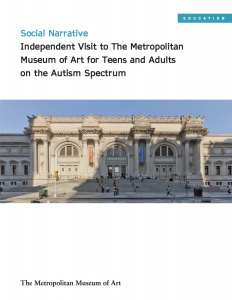
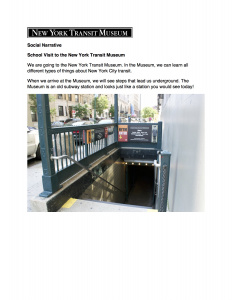

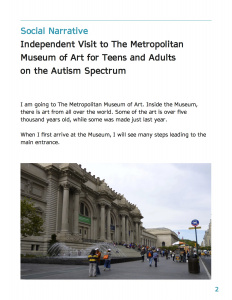
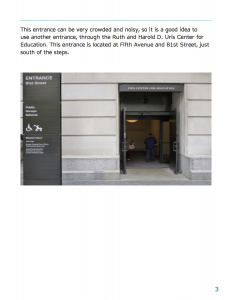
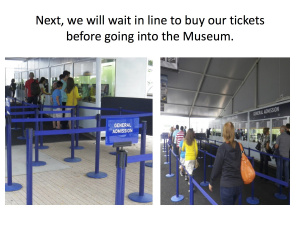
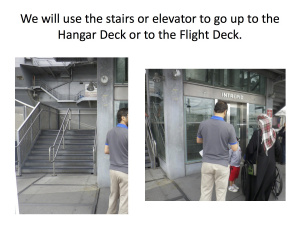
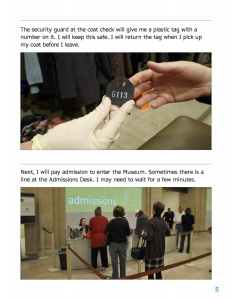

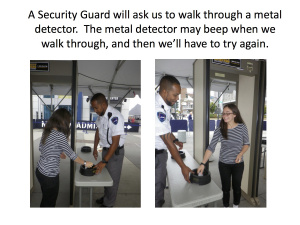
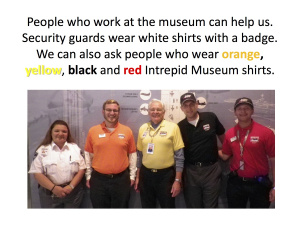
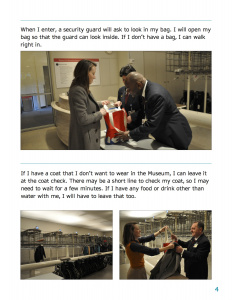
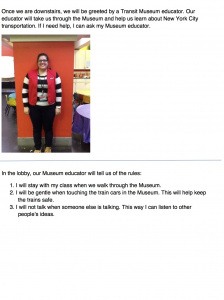
Sorry, the comment form is closed at this time.